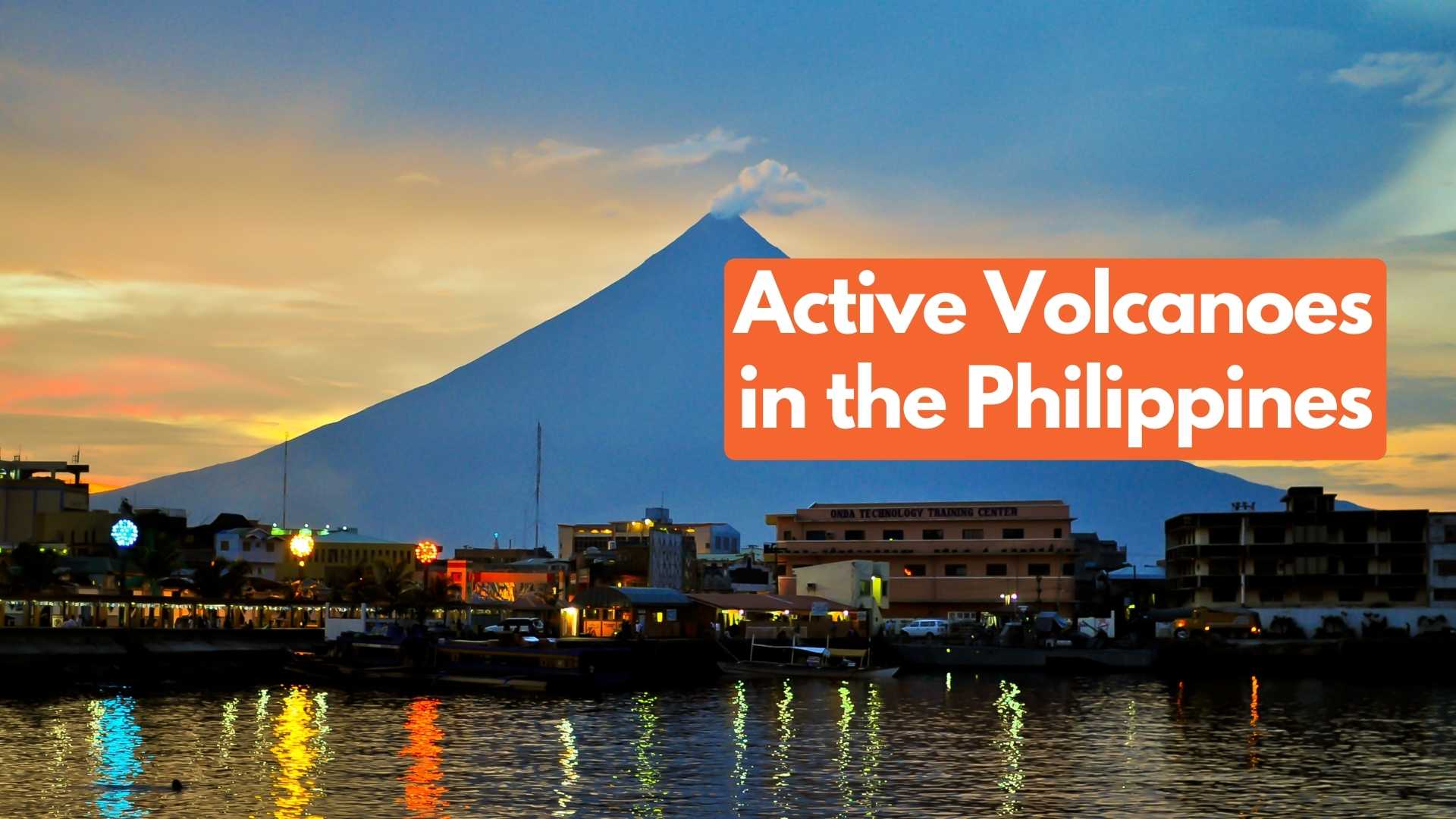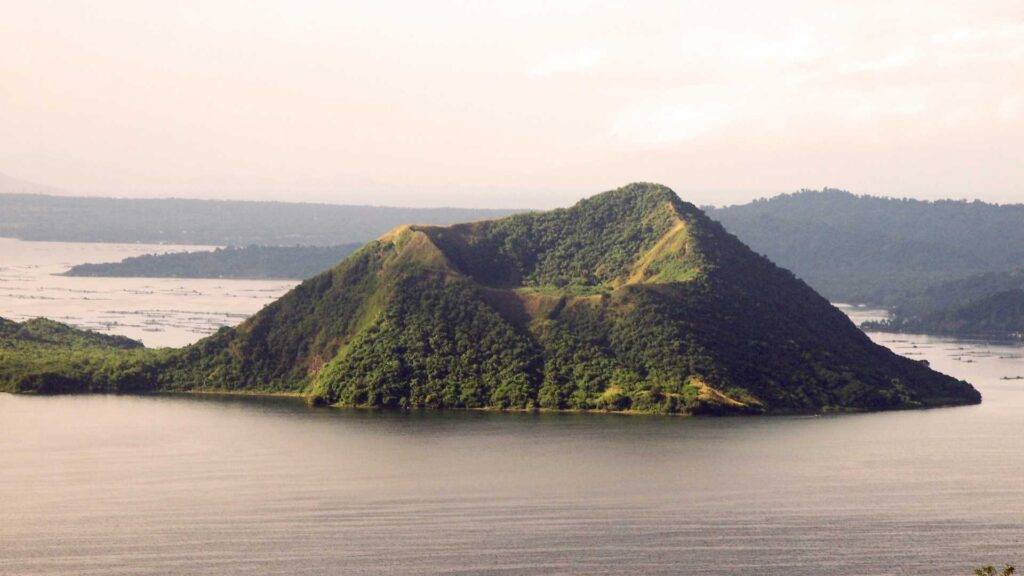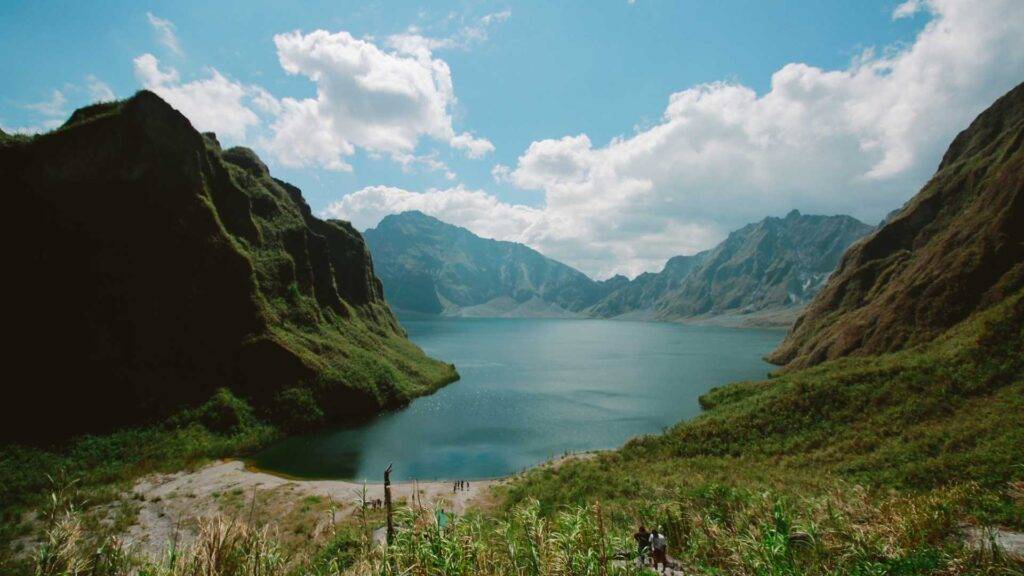
Exploring the Volcanic Wonders of the Philippines: A Guide to Safety and Adventure
Unveiling the untamed beauty and power of nature, the Philippines stands as a captivating land of volcanoes. Join us on a thrilling journey as we delve into the fascinating world of active volcanoes and discover the safety precautions for an unforgettable adventure.
A Brief Overview of the Philippines’ Volcanic History
The Philippines is located on the Pacific Ring of Fire, a region known for its seismic and volcanic activity. With approximately 300 volcanoes scattered throughout the archipelago, it comes as no surprise that 24 of them are active. Over the past 400 years, the country has witnessed 44 significant volcanic eruptions, resulting in over 7,400 deaths. The eruption of Taal on January 30, 1911, stands as the worst in terms of casualties, destroyed houses, and financial damages, claiming the lives of 1,335 people.
Luzon, the largest and most prominent island in the Philippines, is home to most of the country’s active volcanoes. Among these, Mayon, Pinatubo, Taal, Hibok-Hibok, Bulusan, and Kanlaon have displayed the highest level of recent activity, making them the six most active volcanoes in the Philippines. However, it’s important to note that there are also many inactive or sleeping volcanoes in the country, some of which exhibit signs of activity despite no recorded eruptions.

Taal Volcation, Philippines
Unveiling the Active Volcanoes
Let’s embark on a closer look at the six most active volcanoes in the Philippines, each possessing its own unique allure and history:
1. Mayon Volcano
Rising majestically in Albay, Mayon Volcano is renowned for its near-perfect symmetrical cone and picturesque landscapes. This volcano has captured the imagination of adventurers and artists alike. However, its volatile nature is a reminder of the power that lies beneath its beauty. Mayon last erupted in 2018 and 2023, leaving a trail of destruction but also attracting intrepid souls seeking to witness its fiery displays.
2. Pinatubo Volcano
Pinatubo Volcano in Zambales holds a significant place in history due to its cataclysmic eruption in 1991. This eruption, with a Volcanic Explosivity Index (VEI) of 6, released tephra masses of at least 10 cubic kilometers over 25 kilometers high, dramatically altering the landscape. Today, Pinatubo stands as a testament to nature’s regenerative power, with visitors marveling at the rejuvenated surroundings.
3. Taal Volcano
Taal Volcano, nestled in Batangas, is a geological wonder with a lake-filled crater and a smaller volcano within it called “Volcano Island.” Its eruptions are characterized by scenic lake steam eruptions and the presence of a “dry eruption” phenomenon. The 1911 eruption of Taal remains etched in history as one of the deadliest volcanic events in the Philippines. Today, visitors can explore its captivating landscapes while being cautious of its unpredictable nature.
4. Hibok-Hibok Volcano
Camiguin’s Hibok-Hibok Volcano carries an air of mystery and adventure. Known for its eruptions accompanied by rumbling sounds and volcanic tremors, Hibok-Hibok attracts thrill-seekers eager to witness its unique volcanic activity. It is essential for visitors to exercise caution and follow safety guidelines while exploring this enigmatic volcano.
5. Bulusan Volcano
Sorsogon’s Bulusan Volcano showcases a harmonious blend of natural beauty and geological marvels. Its eruptions are often accompanied by intensified steaming activity, providing a spectacle for onlookers. With its lush surroundings and captivating landscapes, Bulusan offers a memorable experience for nature enthusiasts who appreciate the intricate interplay between volcanism and biodiversity.
6. Kanlaon Volcano
Rising proudly on Negros Island, Kanlaon Volcano embodies the raw power and grandeur of nature. Its eruptions, marked by ground swelling, steaming, and the occasional volcanic tremors, remind visitors of the dynamic forces at play beneath the Earth’s surface. While exploring the enchanting landscapes surrounding Kanlaon, respecting safety precautions is paramount to ensure a memorable and secure adventure.

Mt. Pinatubo, Philippines
List of Active Volcanoes in the Philippines, Locations, and Their Most Recent Eruption
Here is a list of the active volcanoes in the Philippines, their locations, and their most recent eruption based on the provided search results:
- Taal – Batangas, Luzon (2020)
- Kanlaon – Negros Island (2016)
- Mayon – Albay, Luzon (2018, 2023)
- Bulusan – Sorsogon, Luzon (2022)
- Smith – Calayan, Luzon (Unknown)
- Hibok-Hibok – Camiguin Island (1953)
- Pinatubo – Zambales, Luzon (1991)
- Babuyan Claro – Cagayan, Luzon (Unknown)
- Banahaw – Laguna and Quezon, Luzon (Unknown)
- Camiguin de Babuyanes – Babuyan Islands, Luzon (Unknown)
- Didicas – Babuyan Islands, Luzon (Unknown)
- Iraya – Batan Island, Luzon (Unknown)
- Iriga – Camarines Sur, Luzon (Unknown)
- Isarog – Camarines Sur, Luzon (Unknown)
- Biliran – Leyte, Visayas (Unknown)
- Bud Dajo – Sulu Archipelago, Mindanao (Unknown)
- Musuan – Bukidnon, Mindanao (Unknown)
- Parker – Mindanao (1641)
- Ragang – Lanao del Sur, Mindanao (Unknown)
- Makaturing – Lanao del Sur, Mindanao (Unknown)
- Matutum – South Cotabato, Mindanao (Unknown)
- Apo – Davao del Sur, Mindanao (Unknown)
- Leonard Range – Mindanao (Unknown)
- Balut – Sarangani Bay, Mindanao (Unknown)
It is important to note that the list of active volcanoes in the Philippines may vary depending on the source and definition of “active.” Nonetheless, it is crucial to be aware of the active volcanoes in the country and their current status to ensure safety and preparedness in case of volcanic activities. Also, the dates indicated on this list may not be accurate as of the most recent information.
Safety Precautions for Volcano Enthusiasts
Before embarking on an expedition to active volcanoes in the Philippines, it is crucial to prioritize safety. By following these precautions, you can help ensure a safe and enjoyable visit:
- Know the risks: Research the area thoroughly and understand the potential risks associated with visiting an active volcano. Reach out to your local emergency management office to learn about your community’s risk of volcanic activity.
- Follow local officials’ advice: Local authorities possess valuable knowledge and experience. Following their advice and instructions is crucial for personal safety. They will provide you with essential information on how to prepare for volcanic eruptions and, if necessary, how to evacuate or seek shelter.
- Stay connected: Sign up for local government emergency alerts and keep your phone charged and with you at all times. Stay informed about local emergency information and listen carefully to updates and warnings.
- Protect your health: Volcanic activity can release harmful substances such as ash, debris, volcanic smog (vog), and volcanic glass. Stay indoors to protect your lungs, eyes, and skin. Learn how to close windows and doors effectively, use an indoor air cleaner, and be aware that N95 masks can help protect against volcanic ash but not volcanic gases.
- Keep personal, financial, and medical records safe: In case of an emergency, keep these records safe and easily accessible, either as hard copies or digital copies.
- Follow the rules: Rules and regulations are put in place for your safety. Not all volcanic hazards are visible, so it is essential to respect and adhere to designated areas and restrictions.
- Avoid areas downwind and river valleys: Stay away from areas downwind of the volcano, as ash and other volcanic materials can be carried by the wind. River valleys are susceptible to lahars, fast-moving mudflows triggered by volcanic eruptions.
- Leave the area immediately if warned: If warned of a lahar, pyroclastic flow, or lava flow heading toward your location, evacuate immediately. If evacuation is imminent due to an impending eruption, follow evacuation procedures. If possible, use a vehicle to evacuate, keeping doors and windows closed and driving across the path of danger or away from it. Remain vigilant for any unusual hazards on the road.
- Avoid flying close to the volcano’s summit: Civil aviation authorities advise pilots to avoid flying close to a volcano’s summit as ash from a sudden eruption can pose a hazard to aircraft. Respect these guidelines to ensure aviation safety.
By adhering to these safety precautions, you can experience the awe-inspiring beauty of the Philippines’ volcanoes while ensuring your well-being and that of those around you.
For additional information and resources on volcano safety, consider visiting trusted sources such as World Nomads, the Red Cross, CDC, Passport Health USA, and GOV websites.
Signs of an Impending Volcanic Eruption
When visiting active volcanoes, it’s essential to be aware of the signs that may indicate an imminent eruption. Although not all signs may be present before an eruption, recognizing them can help ensure your safety. Here are some common signs to be mindful of:
- Increase in the frequency of volcanic quakes: Volcanic quakes accompanied by rumbling sounds and volcanic tremors may indicate rising volcanic activity.
- Increased steaming activity: Noticeable changes in steaming activity, such as a shift in steam emission color from white to gray due to entrained ash, can signify an impending eruption.
- Crater glow: The presence of magma at or near the crater may cause a visible glow, especially during nighttime observations.
- Ground swelling, ground tilt, and ground fissuring: Inflation of the ground, tilting, and the appearance of fissures can indicate magma intrusion beneath the surface.
- Localized landslides and rockfalls: Unexplained landslides, rockfalls, and landslides from the summit area, unrelated to heavy rains, may indicate increased volcanic activity.
- Intensified steaming activity: An upsurge in steam emissions from the volcano, possibly accompanied by louder hissing sounds, suggests heightened volcanic activity.
- Dried-up vegetation, streams, and water wells: Volcanic activity can disrupt natural water sources, leading to the drying up of vegetation, streams, and water wells in the vicinity.
- Ground movement or tremors: Noticeable ground movement or tremors resulting from volcanic earthquakes are indicators of increased volcanic activity.
- Swelling, cracking, or sinking of the ground: Physical changes in the terrain, such as ground swelling, cracking, or sinking, can occur as a result of magma movements.
- Noticeable steaming or fumarolic activity: Unusual or increased steaming or fumarolic activity, along with the emergence of new or enlarged areas of hot ground, should be noted.
- Subtle swelling of the ground surface: Subtle changes in the ground surface, such as minor bulges or deformations, may signify underlying volcanic activity.
- Small changes in heat flow: Slight variations in the heat flow from volcanic vents or fissures can indicate changes in the volcanic system.
- Changes in the composition of fumarolic gases: Alterations in the composition or relative abundances of gases emitted from fumaroles (volcanic gas vents) can provide insights into volcanic processes.
It is important to remember that volcanic eruptions are complex and can exhibit different warning signs. Always rely on the guidance of local officials and evacuate immediately if warned of an impending eruption.
For more detailed information on volcanic signs and monitoring techniques, consult sources like Scribd, Quizlet, Sciencing, Popular Mechanics, and Scientia Fantastica.
Volcanoes: Nature’s Power Unleashed
Volcanic activity has a profound impact on the environment and surrounding communities. Beyond their spectacular beauty, volcanic eruptions can shape landscapes, influence climate patterns, and pose hazards to human settlements. Volcanologists employ various techniques to study volcanic phenomena, including measuring ground swelling and ground tilt.
To measure ground swelling and ground tilt, volcanologists utilize instruments such as GPS (Global Positioning System) and tilt meters. These instruments monitor changes in ground surface elevation and slope angles, providing valuable data to track volcanic activity and potential eruptions.
It’s important to differentiate between volcanic tremors and tectonic earthquakes. While tectonic earthquakes result from the movement of Earth’s tectonic plates, volcanic tremors are seismic activities associated specifically with volcanic processes. Volcanic tremors are often accompanied by rumbling sounds and can be detected using specialized seismometers.
Volcanic eruptions impact the environment in diverse ways. They can release volcanic ash and gases into the atmosphere, alter landscapes, trigger lahars and pyroclastic flows, and influence climate patterns. The long-term effects of volcanic eruptions depend on factors such as eruption magnitude, duration, and the presence of human settlements in the affected areas.
Exploring the volcanic wonders of the Philippines offers an awe-inspiring adventure, but it is essential to respect the power of these natural phenomena and prioritize safety. By staying informed, following safety precautions, and heeding the advice of local officials, you can embark on an exhilarating journey while safeguarding your well-being.
So pack your sense of wonder, prepare for the unexpected, and set forth on an unforgettable exploration of the volcanic wonders that define the Philippines.




